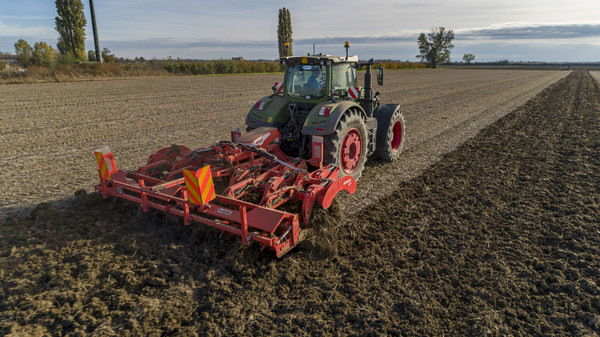
Transfarm: digital conquers young companies
Precision farming and 4.0 systems are becoming increasingly popular among young entrepreneurs, but small farms are not always able to absorb the cost of the technologies. The European project Transfarm 4.0 involves five countries and aims to highlight the strengths and weaknesses of the innovation process in farms
It boasts an excellent and widespread network of producers and a good network of sales outlets. But it pays the price for the high average age of its entrepreneurs, who are mostly tied to traditional farming methods. In a survey of 220 farmers, the Transfarm 4.0 interregional programme, funded by the European Union, takes stock of the expansion of precision farming in some European countries. While the sector is increasingly attracting the younger generations, the Italian system suffers from the weakness of still being very fragmented, characterised as it is by small farms that are often unable to meet the cost of new technologies to innovate cultivation methods. Another weakness is that companies often lack the necessary skills to develop precision agriculture and farmers are not always able to tap into the European resources made available to stimulate investment, while the lack of availability of technology could be a brake on growth. The Transfarm 4.0 programme was presented at EIMA, the international exhibition of machinery for agriculture and gardening held in the halls of BolognaFiere. A presentation with several stages of a programme based on three fundamental pillars: the use of big data, sensors and Isobus, the communication system between operating machines and tractors. In Italy the programme, which will end in June next year, involves Crea, Council for agricultural research and economics, and FederUnacoma, the trade association of agricultural machinery manufacturers. In addition to the Italian partners, the Transfarm project involves research bodies from four other countries: Austria, Poland, Slovenia and Hungary.
"Our aim is to find ways of reducing water and chemical consumption with both economic and environmental benefits, using new technologies. We thought we could achieve a 30% saving, while in some contexts we have already exceeded 50%."
This is how Davide Bòscaro, a researcher at Crea, the agricultural research centre, described the aims of the project to representatives of the foreign bodies taking part in the initiative. "With this project we want to contribute to the spread of precision agriculture," explained Diego Tomasi, Crea's lead researcher and coordinator of the project, "and after conducting the survey among farms we have created three experimental applications: the use of an ISOBUS protocol, a kind of computer language to make tractors communicate with the equipment produced by the different brands; the use of sensors with which the dispersion of sprayed products in the open field is reduced; and finally the use of artificial intelligence to derive useful information for the farmer, from the mass of information that arrives thanks to sensors and other sources".
The Transfarm 4.0 project should provide guidance on how to enable European companies to adopt these innovative practices. "When we present the results of all this work," Tomasi added, "we will also see how the regional bodies of the various countries, have understood the importance of precision farming.
Because technological innovation is mainly based on European funds, our representatives must have clear ideas on how to use these funds."








